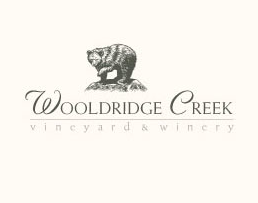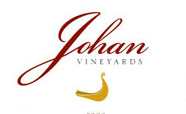Keg wine. It might not sound very romantic, and it’s certainly not an entirely original idea, but Oregon’s Wooldridge Creek Vineyard and Johann Vineyards are taking a risk in a tough economy by selling wine kegs to restaurants for their by-the-glass pours. I think it’s nothing short of genius.
 The wine-by-the-keg program is really nothing new. It has been around for at least a decade in the U.S. and abroad. Nationwide, approximately 60 wine kegs are in rotation in Las Vegas establishments on an ongoing basis, and wines-by-the-keg are also being embraced by restaurants and wine bars in Los Angeles, San Francisco, and Napa, California; in Atlanta, Georgia and Traverse City, Michigan; and even in New York City at Terroir Tribeca and at Daniel Boulud’s downtown locale.
The wine-by-the-keg program is really nothing new. It has been around for at least a decade in the U.S. and abroad. Nationwide, approximately 60 wine kegs are in rotation in Las Vegas establishments on an ongoing basis, and wines-by-the-keg are also being embraced by restaurants and wine bars in Los Angeles, San Francisco, and Napa, California; in Atlanta, Georgia and Traverse City, Michigan; and even in New York City at Terroir Tribeca and at Daniel Boulud’s downtown locale.
When Brian and Mike McMenamins, the brothers who founded the eponymous brewery and brewpub chain, initially began producing wine, they actually finished them off in kegs, using the equipment they had on hand. And while they soon gave in to the demand for glass, corks, labels, and foils, maybe their heads will now turn back to kegs.
According to Cask Wine Brokers owner Mark Strelcheck, one of the preconceptions consumers have about bulk wine is that wineries must be unloading less-than-premium juice. That may be true with some keg wines, but Wooldridge Creek and Johann don’t compromise on anything—they’re selling the same high quality wine they would be putting into bottles. In fact, Strelcheck says the wine in his kegs earned 92 points from Wine Spectator.
The real beauty with keg wines is that everyone wins. Wineries save money on production costs (less time at the bottling line) as well as packaging costs (reducing bottles, labels, corks, stelvin closures, capsules, cardboard boxes, and storage area). All of this reduces the winery’s carbon footprint, too, and the savings can ultimately be passed along to the consumer.
 For restaurant owners, it’s a cost effective and efficient approach, which makes the return on investment irresistible. An easy-to-transport, reusable, five-gallon stainless-steel keg, the equivalent of 25 bottles of wine, will store wine for over five months without compromising its integrity. The keg itself can be refilled again and again for years. There’s no recycling or trash to think about, and no worries about corked bottles (those tainted with TCA), and no time wasted opening bottles, either, saving the restaurant endless time and money.
For restaurant owners, it’s a cost effective and efficient approach, which makes the return on investment irresistible. An easy-to-transport, reusable, five-gallon stainless-steel keg, the equivalent of 25 bottles of wine, will store wine for over five months without compromising its integrity. The keg itself can be refilled again and again for years. There’s no recycling or trash to think about, and no worries about corked bottles (those tainted with TCA), and no time wasted opening bottles, either, saving the restaurant endless time and money.
And there’s no lost wine. Since the wine in a keg is protected by argon gas, it remains fresh and will never become oxidized. When poured a tired glass of wine from a bottle that should have been put to rest some time ago, the average consumer is likely to think it was actually just a poorly made wine and would probably never purchase that brand again. But with wine in kegs, the guest will have an improved experience and more favorable impression of the wine—an unforeseen bonus to producers as well. The bottom line is that pricing no longer has to be affected by wasted wine.
Kegged wine’s advantages go beyond the winery, restaurant, environment, and consumer. Strelcheck advocates buying local and aims to put Oregon wines back into Oregon restaurants. “I’d really like to eliminate the cheap foreign and domestic glass pours in many local establishments and replace them with high quality yet inexpensive wine,” he said. “I believe in good, local wine for less money.”
Even though Oregon wine is expensive to produce and the prices show it, when purchased by the keg, wholesale costs are reduced dramatically—from $18.00 per bottle to $7.50 per bottle. That means a $16.00 glass of the finest Oregon Pinot could now cost an affordable $6.00 instead.
Though there are some set-up costs, Strelcheck says he will recover his investment after selling only half a keg. (He has a long and strong background in the restaurant industry, experience that enables to him to tackle the installation with confidence himself.)
Wooldridge Creek Vineyard produces and will keg Chardonnay, Viognier, Tempranillo, Cabernet, Merlot, Pinot Noir, Syrah, and Zinfandel, and will even create custom blends, so the opportunities are endless. Currently, Wooldridge and Johann wine kegs are in a few Portland area restaurants that have already caught the buzz: downtown at The Melting Pot and H5O Restaurant at Hotel 50, and in Bridgeport Village at Agave Grill. Keg o’ wine is also catching on at a McMinnville establishments and at 14 restaurants in southern Oregon.
As Strelcheck and I chatted, I couldn’t help wondering why more tasting rooms weren’t utilizing kegs. I realize there are certain customer expectations about how a wine should be stored and presented—one has only to look at the Stelvin closure debate to see how sensitive this topic is. But this technology is both environmentally sound and makes good business sense, so a truly innovative winery might be able to figure out how to make kegs work for them rather than sticking with what’s expected or historically acceptable. What if a tasting room served its kegged wine from unique and beautiful decanters, for example?
In the meantime, I applaud Wooldridge Creek and Johann Vineyards for their spirit of innovation, and I’m confident that this is the packaging of the future. I encourage you to try it for yourself to see how it could change your impression of wine-by-the-glass.
 Tamara Belgard is a freelance writer and graphic designer living her dream in Portland, Oregon. She currently writes a wine blog called Sip with Me detailing her journey through Oregon wine. Tamara is a marketing communications guru, a lover of wine, chocolate, and pedicures whose other passions include skiing, biking, hiking, writing, reading, photography, yoga, shopping, travel, and all things culinary.
Tamara Belgard is a freelance writer and graphic designer living her dream in Portland, Oregon. She currently writes a wine blog called Sip with Me detailing her journey through Oregon wine. Tamara is a marketing communications guru, a lover of wine, chocolate, and pedicures whose other passions include skiing, biking, hiking, writing, reading, photography, yoga, shopping, travel, and all things culinary.
